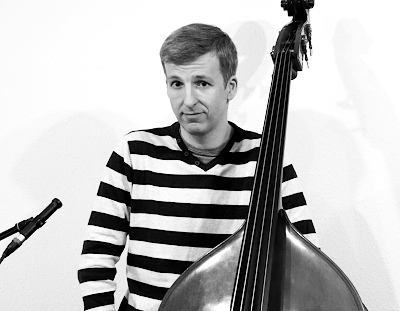Willkommen ...!
Ich schätze sowohl die Schlichtheit eines Songs (gutes Songwriting, gute Texte) als auch die Komplexität von Kompositionen des modernen Jazz.
Neben meiner Arbeit als (Multi-)Instrumentalist liegen mit das Unterrichten sowie die kreative Arbeit im Tonstudio (Arrangieren, Aufnehmen, Mischen und Mastering von Musik) am Herzen.
Welcome ...!
I'm afraid this website is mostly in German but feel free to contact me. However, you can find some information in English if you browse through this website. I added English comments where I found it useful.
Please have a look at my video section!
Tim’s Odd Meter Collection (Vol. 1)
A collection of rhythms and grooves that feature an odd time signature. Including examples in 7/4, 13/8, and even longer meters. Enjoy!
You can watch many other video clips with music on this website as well.
Ich steh an deiner Krippen hier
Mein musikalischer Weihnachtsgruß 2017: “Ich steh an deiner Krippen hier”, ein Choral mit der Melodie von J. S. Bach (BWV 469). Ich habe das Lied für 5-saitigen E-Bass arrangiert. Zum Einsatz kommen neben einem Looper analoge Effekt-Pedale.
“Ich steh an deiner Krippen hier” (Beside Thy Manger Here I Stand) – an adaptation of J. S. Bach’s melody (BWV 469), arranged for bass and played by Tim Teissen.
This version features live looping, an odd-meter loop cycle, and an improvisation. No overdubs, everything you hear was recorded in a single take.
Season’s greetings and best wishes for the New Year!
The Power of Konnakol (7): How to play anything over anything
Step-by-step instructions how to play any number of notes over any number of beats. This video lesson includes the following polyrhythms:
3 over 4, 3 over 5, 3 over 7, 4 over 7, 5 over 4, 7 over 4.
topics: rhythm, konnakol, subdivisions, polyrhythms
Level: advanced
Instruments: for all instruments
Duration: approx. 9:40 min
For a list of all my video lessons go here.
You could also use the tag cloud (in the footer area of this website) in order to look for video lessons.
All German-speaking viewers may have a look at my translation page.



